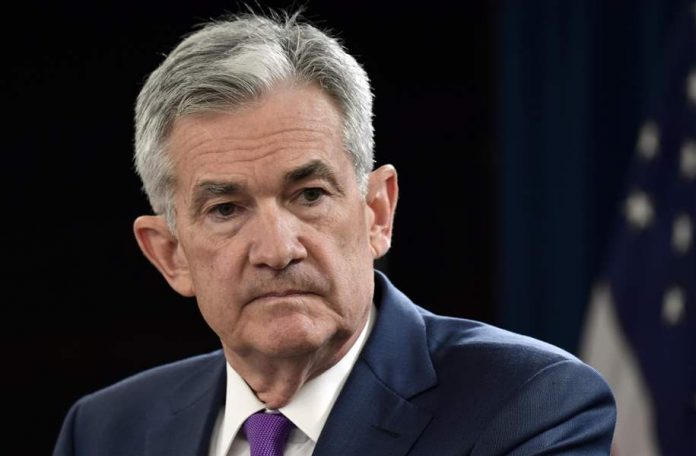Stocks traded slightly lower this morning as investors awaited the Fed’s rate hike decision. Fed Chairman Jerome Powell is expected to announce a 50 basis point (0.5%) rate increase this afternoon.
The market also anticipates a balance sheet reduction announcement to the tune of $95 billion per month, starting in June. The Fed’s balance sheet has swelled to roughly $9 trillion thanks to unprecedented pandemic-induced easing.
If Powell meets expectations, stocks could easily rally. Investors have been worried that Powell would go more hawkish than anticipated due to rapidly advancing inflation.
That’s led to some heavy selling over the last few weeks.
We observed in the past that the Fed was in a tough spot; rising inflation, slowed growth, and an expanded debt-to-GDP ratio (137% as of December 2021) put Powell in an unwinnable position.
He was forced to choose between either a high inflation hellscape (by not raising rates enough) or a recession (by raising rates a sufficient amount). The market called his bluff back in late March when stocks surged through the end of the month.
Many investors assumed that the Fed would give up on its rate hike schedule and capitulate as the US flashed warning signs of a recession, like when several long-term/short-term yield spreads simultaneously inverted.
But a few weeks later, in early April, Fed governors came out and made several majorly hawkish statements. Even the Fed’s biggest dove, Lael Brainard, flipped “full-hawk,” warning investors that an aggressive tightening cycle was on its way.
With no April FOMC meeting, the market was left to speculate for weeks as to how hawkish the Fed would really go.
Share prices cratered as today’s meeting grew nearer and stocks were ultimately pushed down further toward the end of April by weak earnings guidance.
“Volatility is likely to continue. Rate hikes have just begun, inflation looks sticky, many geopolitical issues have no obvious offramp, and midterm election rhetoric is just ramping up,” said Baird’s Ross Mayfield in a note to clients.
“Though the domestic economy has been resilient, corporate earnings are hanging tough, and the US consumer continues to spend, instability – driven by inflation and rates – should continue in the near-term. Have we seen this year’s market low? Possibly not.”
That doesn’t exclude the market from a short-term rally in May, though. Stocks appear oversold, and if “spinmaster” Powell can produce another optimistic post-FOMC meeting press conference, bulls may very well see the S&P approach its late-March high at around 4600.00 before the month is finished.
“What the market is really going to care about is the outlook for hikes and particularly the possibility of 75 basis points,” said Bank of America’s US rates chief Mark Cabana.
“[Powell] is not going to support or dismiss the idea of 75.”
His typical strategy involves telling investors that the Fed will remain flexible moving forward. This leaves the door open to a dovish tilt in the future, which bulls love. He did this after the March FOMC meeting on the 16th, which saw stocks fall in response to the Fed’s rate hike announcement.
Then, Powell’s press conference began, and the S&P roared 2.56% higher off the intraday low in the final hour and half of trading, sparking the late March rally.
“We think he is going to try to be as noncommittal as possible, similar to how he sounded last time,” Cabana explained.
Cabana’s right. Stocks will probably dip once the 50 basis point rate increase is announced. However, sentiment is also likely to turn on a dime when Powell starts talking, leading to yet another huge intraday reversal.
There’s no guarantee that this will happen, of course. But it’s exactly what the market did last time Powell uncorked a new rate hike. And, given just how oversold equities look following their April plunge, it could be enough of a “kick in the pants” to launch the next major market melt-up.








